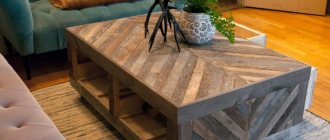We are planning a place for a vegetable garden.
Smart vegetable garden design begins with thoughtful planning. You must decide what size your garden will be, what vegetables you will grow in it, where your beds will be located.
Your vegetable garden will not always be large; more and more summer residents are leaning towards a small vegetable garden, which takes its rightful place in the overall landscape design of the garden.
How to arrange a vegetable garden
Landscape design of garden beds has become relevant for summer residents and gardeners quite recently. When there was no longer an urgent need to perceive the garden as a source of food and to occupy all the free space of land available for it, the gardener had the opportunity to plan the landscape more freely, to leave part of the surface uncultivated, sodded with grass or covered with decorative materials. This gave more scope for designing the site and modeling it as an aesthetic rather than just a utilitarian object.
Of course, landscape design is a whole science, and in order to create a truly original and sophisticated design, many prefer to turn to specialists. But this is not always necessary. Nowadays you can create a beautiful garden in your country house with your own hands.
Vegetable garden design - let your vegetable garden be beautiful.
When most people hear the word “garden,” they think of long, boring beds of vegetables. But this shouldn't be your only garden design option.
You can make your garden so that it is as beautiful as your flower beds.
A little advice. It makes sense to test a new form of vegetable garden, invented on paper, in the first year. Life can make its own adjustments to the shape of the beds and their number.
Smart beds
The main principle in smart beds remains the same as in lazy ones, but the emphasis is on fertilizers. The quantity of the harvest and how carefully it will be necessary to care for it directly depend on their quality.
Smart beds only need to be dug up once. They do not need weeding - mulch will prevent weeds from sprouting.
The soil in them is compost, consisting of straw, leaves and sawdust containing nutrients. A thin layer of soil is laid on top of it, and after a couple of weeks the bed can be planted.
See alsoModern landscape design. Main trends
Record your garden design on paper.
Even a small vegetable garden requires careful planning.
Having a pre-designed garden design on paper will help you analyze the effectiveness of your design for the current season and plan new plant combinations and new beds for future seasons.
Do-it-yourself warm bed
Having previously sampled 40-50 cm of soil, we lay the layers in the following sequence.
Such a bed uses not ordinary soil as soil, but compost, to which straw, leaves and sawdust are added, which as a result provides even more useful substances for future plants.
- Large wood
- Small wood
- Earth
- Organic - waste
- Sprinkle EM-Bokashi, spill EM-A
- Earth again
- Organic - waste
- Sprinkle EM-Bokashi, spill EM-A
- Humus
- Mulch (5-8 cm)
The service life of such a bed is 6-8 years.
See alsoHow to make and decorate a gazebo with your own hands
Make comfortable beds.
Be sure to clearly demarcate each area of your garden. This will not only give it a neater look, but will also help you plan your plantings for the next step.
The clear geometric contours of the garden bed, even in a small space, create a visual accent in the landscape design, while creating a feeling of order and cleanliness.
If the soil on your property is not ideal, raised beds are the easiest way to solve this problem. Vegetables do surprisingly well in this modern setting.
Raised beds require an investment of time and effort, but it will all come back a hundredfold when you realize that your back no longer hurts after the next weeding. Of course, it is not necessary to raise the entire garden above the ground.
Save raised beds for the kitchen herb garden and those crops that require the most care. This way your energy will be spent with maximum efficiency.
Avoid making the beds wide. You must have good access to process them.
But long ones are welcome. The main thing is that you can freely reach the middle while standing on the path.
Try different garden design options and choose what suits you.
Preparing the site for creating beautiful beds: basic rules
A beautiful vegetable garden is part of the landscape design, an extension of the yard. Original ideas for designing beds will help combine the aesthetic and practical purposes of this part of the garden plot.
Proper soil preparation for planting Source kalipso-busybee.blogspot.com
Loosening the soil, oxygen saturation Source stmarycanons.org
To create a beautiful vegetable garden you need:
- Think over the layout of the site. Based on size, topography, location.
- Decide on a plant map. Plan what crops will be grown, select conditions for their development.
- Prepare the irrigation system. Decide what type will be used (automatic, manual, drip or sprinkling). Mark the points where the water connections are located.
Drip irrigation of the garden Source zabtr.ru
Scheme of organizing drip irrigation on the site Source svoimi-rykami.ru
- Choose a landscape design style. It should be in harmony with the overall concept of the house and yard.
- Consider lighting so that you can approach the garden bed in the evening.
- Decide what materials will be used to make the shape of the bed.
Beautiful garden beds at the dacha will not only create an interesting landscape composition, but will also increase the yield per 1 acre if vertical container beds filled with fertile humus are used.
Unusual garden design options.
If you don't have much space on your yard or aren't planning a full-scale vegetable garden, you can create custom garden beds almost anywhere in your garden. Try replacing a small flowerbed with a bed with various types of greens and tomatoes.
And this miniature vegetable garden looks very impressive due to its location.
And this one helps you grow more crops per square meter.
Creating lazy beds
The creation of such beds allows you to reduce weeding, increase productivity, and such beds will also allow you to increase the time for rest.
To create such beds, you need to make a box or rectangle from boards tightly packed together. Instead of wood, you can use building materials such as slate, sheets of metal and even permanent beds made of brick.
The size of such beds can be almost any, the main thing is that the plants in such beds are not crowded and they should be positioned so that they receive maximum sunlight during the day.
From the inside of the knocked together frame, scraps of PVC pipes are attached, in the corners of the structure, as well as in several places along the long side of such ridges. The ends of such pipes should protrude slightly beyond the top edge of the boards. Subsequently, these trimmings will serve to insert arches onto which the covering material will be stretched, if necessary.
The boxes are installed on the site in a pre-selected place; it is recommended to lay a fine-mesh metal mesh on the bottom of such beds, which in some cases can protect the plantings from rodents. Soil is poured inside such beds of boxes and after filling the boxes, plants are planted.
In the summer, such beds need to be watered almost every day in the morning or evening, especially in the heat. To facilitate this task, you can always install drip irrigation systems, which will allow you to water the plants not very often, but quite abundantly. This type of garden watering is easy to do with your own hands.
To plant plants, such beds are dug up in the spring, seeds or seedlings are planted, and then the soil is covered with mulch to eliminate weeds.
Read here How to decorate a yard with your own hands - simple ideas for landscaping, design and arrangement (95 photos)
Such beds quickly pay for themselves and when growing cultivated plants, such beds can produce a good harvest.
Choosing plants for the garden.
There is no clear answer to the question of placing various crops in the garden. Too many factors play an important role here and, first of all, your climate zone and soil composition. But there are simple general rules to keep in mind when planning your plantings.
Consider the position and orientation of your site. Plant tall plants so that they do not shade their shorter neighbors.
Consider the lighting and watering conditions of the individual crop. You should not dictate your terms to plants and grow your favorite plants where you have space, without taking into account their preferences.
You can always adjust your planting plans taking into account the specific conditions of your site. Believe me, there are many plants that will happily grow in your conditions.
Do not forget to take into account the watering regime for each bed, so that it does not turn out that plants requiring more frequent watering are located in the most inconvenient place for this.
Do not plant the same crop two years in a row in the same place. This depletes the soil, increases the likelihood of plant disease and reduces yields.
Raised beds
Bad climate and low yields will become a forgotten problem for you thanks to the high construction of the beds. Their creation is quite labor-intensive, but the result will pleasantly surprise you.
Even though this is a very labor-intensive process at first - building the frame itself and watering the beds, it will allow you to forget about the bad climate and low yields.
The advantages of such beds.
- Good soil heating due to the proximity of the sun. They can be planted as early as April.
- The bottom mesh will protect the crop from moles and rodents.
- The frame, about 1.5 m wide, will ensure convenient watering, since it can be approached from both sides.
- By dividing it into two parts, you can easily organize a greenhouse with your own hands.
- The harvest on high beds appears earlier than on ordinary ones.
A high bed is always exposed to the sun, which helps to warm up the soil layer, so it can be planted as early as April without fear of freezing.
However, one drawback of this design can be identified - the need for frequent watering due to the fact that moisture quickly goes down.
The most popular materials for making raised beds are:
- Aluminum barrels;
- Stone;
- Brick;
- Logs.
It is worth noting that it is the high beds that provide the earliest harvest of first salads and then fastidious vegetables.
They are made in the form of combs or trapezoids. They are created for one season, since under the snow in winter they noticeably settle. They are used mainly for melons and melons – cucumbers, pumpkins, zucchini. Sometimes potatoes are planted in them.
See also: DIY garden decor
Modern vegetable garden design
The main principle of modern garden design is combination. By abandoning the idea of ordinary flat beds of only cabbage, next to which are placed boring beds of only cucumbers, you can turn your garden into a work of art.
How often do we pay attention to the beauty of the tops of carrots and beets, or how dotted inclusions of unpretentious marigolds add a beautiful bright accent to the overall greenery of the garden?
Flowers located among the greenery of the garden create sparks of light. They are also a great way to attract beneficial insects. By learning to “paint” with the texture, color and shape of plants in your garden, you can create a real vegetable bed.
And, as in an ordinary flowerbed, in the design of your vegetable garden you can fully express your imagination, gain new experience and rejoice at successful finds.
Even a small space in the garden bed can be filled with a mixture of vegetables and flowers, which complement each other and serve as an advantageous backdrop for plants of the most vibrant colors.
BONUS: 5 super ideas and non-standard solutions
Decorating a vegetable garden is not only a useful activity, but also an exciting creative process. If you use your imagination and use your imagination, you can create an exclusive garden composition. A large number of improvised means and old things are used as decoration and small architectural forms.
DIY scarecrow Source eco-d-eco.ru
Children are often involved in this work. Children especially like to dress up the garden scarecrow. It scares away birds and serves as a decoration for the area.
Beautiful design of a small vegetable garden Source diz-cafe.com
How to combine plants in the garden.
But, of course, you can’t just take and plant everything in a row in the garden. Some crops go well together, and some combinations should be avoided.
In addition, proper proximity helps prevent damage to various diseases and repel some pests. The compatibility table will help you figure this out.
Warm beds
The principle of constructing warm beds is based on multi-layering and the placement of fresh manure in their lower layers. In winter, the main processes begin, and by spring it begins to decompose. As the manure rots, it releases heat, and the bed becomes ready for planting early.
Many gardeners have been convinced more than once that high-quality fertilizer produces a large harvest that does not require much effort from its owner.
This method is suitable for radishes, cucumbers and other crops with shallow roots.
See alsoPlants for landscape design
Design of a decorative vegetable garden.
You can combine not only garden crops with each other. The fashionable design of a decorative vegetable garden successfully combines vegetables with flowers.
A traditional rural garden always delights with a riot of color and texture, which comfortably combines flower beds and beds. While many vegetables, such as tomatoes and bell peppers, are decorative on their own, adding one or two types of flowers to other types of vegetables can provide the necessary pop of color.
If you like to cook on the grill in the garden, then why not plant the necessary seasonings nearby. This vibrant mix of vegetables and ornamental grasses will liven up your patio or gazebo.
And the proximity of vegetables to flowers will make your beds especially attractive and will not harm your harvest at all. This way you can create entire compositions of tasty, healthy and beautiful things.
Vegetable garden design is a living process of interaction with the beauty of nature.
Experiment! Some things depend on your imagination and your desire, and some things will be told to you by the plants themselves. A magnificent well-kept garden, in which only vegetables grow or vegetables in combination with flowers and ornamental herbs, makes any dacha worthy of our admiration. Have you tried experimenting with vegetable garden designs in your garden? Tell us about it in the comments section below!
How to make lazy beds - basic tips
In this approach, preparation for future planting is very important - it is advisable to do this in the fall, when you can collect material for mulching the soil (you need to cover it with straw, sawdust, cones, etc.), which, in turn, will prevent weeds germinate in an area with such cover.
Do-it-yourself lazy bed: step 1-4 We determine the height of the board of all sides, depending on the location of the bed installation. We connect the boards with a screwdriver and remove the clamps. We turn the bed over and outline the installation location, focusing on the lighting conditions for future seedlings
Do-it-yourself lazy bed: step 4-8 We firmly install the bed by burying the corner beams in 12-15 cm holes. We check the sides of the bed with a building level (for normal operation of the future irrigation system). We attach PVC pipes to the sides from the inside (for hoops with mesh or film against bad weather and birds). Compact the soil and line the bottom with a metal mesh against moles (and, depending on the materials and purpose of the bed, with geotextiles)
Do-it-yourself lazy bed: step 9-12 Fill in the soil of the desired type. We attach the hoses of the irrigation system. We plant seedlings. If necessary, we install hoops for the awning. Ready!
Photo of soil mulching
Mulch is also useful for filling the areas between the beds.
Depending on the relative position of the beds (and how long you will be away), choose auto-watering or drip irrigation
To prevent the soil from creeping out of the beds fenced with stone, you can use strips of geotextiles
Photos of gardening equipment
What trellises for tall plants will look like depends only on your imagination. There is always any option on sale, including wall-mounted ones, for a barn
Smart dacha: green energy and lazy beds
Smart beds only need to be dug up once. They do not need weeding - mulch will prevent weeds from sprouting
Tomatoes on a trellis in smart beds
The metal sides of the beds should be dug into the ground to a shallow depth.











